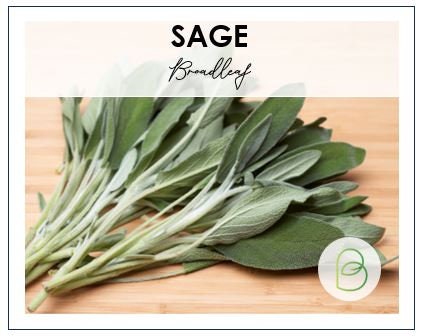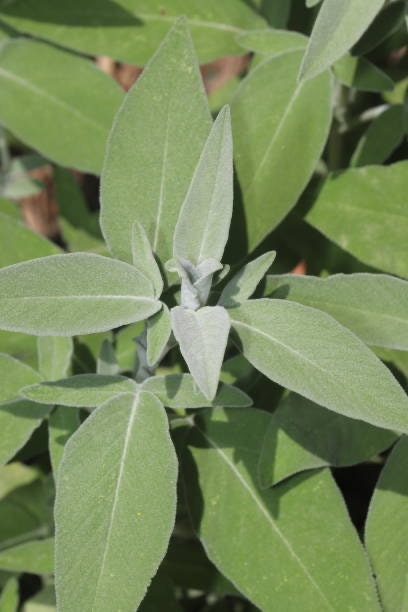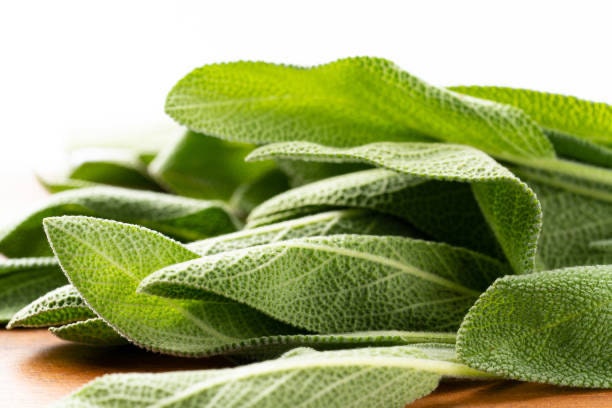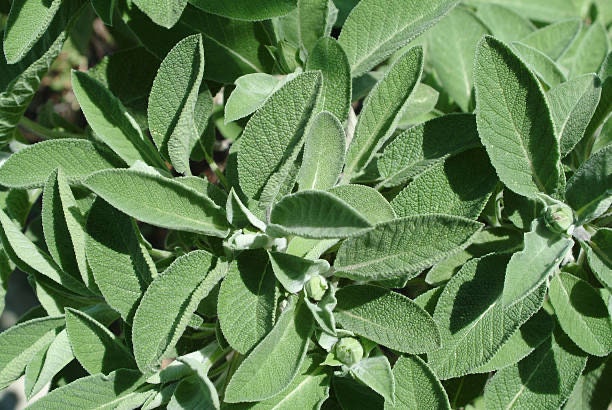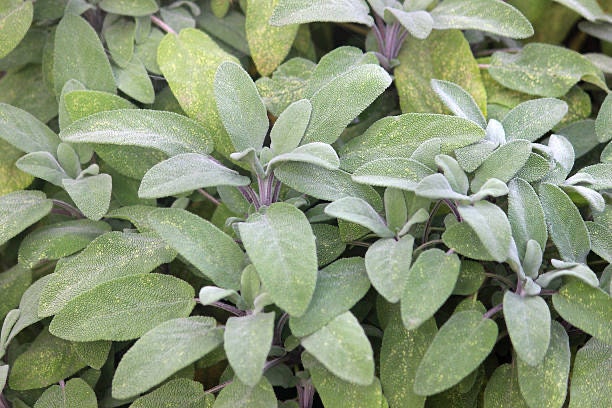My Store
Sage Broadleaf
Sage Broadleaf
Couldn't load pickup availability
25 Seeds
Broadleaf sage, scientifically known as Salvia officinalis, is a perennial herb that belongs to the mint family (Lamiaceae). It is native to the Mediterranean region and is widely cultivated for its aromatic leaves, which are used in culinary, medicinal, and ornamental applications. Here's a detailed description of broadleaf sage:
**Plant Characteristics:**
- **Height:** Broadleaf sage typically grows to a height of 1 to 2 feet (30 to 60 cm) and spreads outwards, forming a bushy, compact shape.
- **Foliage:** The leaves are oval-shaped, fuzzy, and grayish-green in color. They have a slightly wrinkled appearance and a strong, distinct aroma.
- **Flowers:** Sage plants produce tubular, two-lipped flowers that can range in color from pale blue to purple or white, depending on the variety. The flowers are attractive to pollinators like bees and butterflies.
- **Aroma:** The leaves of broadleaf sage are highly aromatic, with a warm, earthy fragrance and a slightly bitter, peppery taste.
**Growing Conditions:**
- **Sunlight:** Sage thrives in full sunlight but can tolerate partial shade.
- **Soil:** It prefers well-drained soil with moderate fertility. Sandy or loamy soil with good drainage is ideal for healthy sage growth.
- **Watering:** Sage is drought-tolerant and prefers slightly dry conditions. Water the plant moderately, allowing the soil to dry out between waterings.
**Uses:**
- **Culinary:** Sage leaves are commonly used as a culinary herb, imparting a savory, slightly peppery flavor to dishes. It is often used in stuffing, sauces, and meat dishes.
- **Medicinal:** Sage has been used in traditional medicine for its potential health benefits, including as a digestive aid and throat gargle. It contains essential oils and antioxidants.
- **Aromatherapy:** Sage essential oil is used in aromatherapy for its calming and grounding effects.
- **Ornamental:** Sage plants are also grown for ornamental purposes in gardens and landscapes due to their attractive foliage and flowers.
Broadleaf sage is a versatile herb that adds both flavor and beauty to gardens and is valued for its various culinary and medicinal uses.
Here are step-by-step instructions for sowing sage seeds:
**1. Timing:**
- Sow sage seeds indoors 6-8 weeks before the last expected frost date in your area. Sage plants benefit from an early start indoors.
**2. Seed Trays or Pots:**
- Fill seed trays or small pots with a well-draining seed starting mix. Sage seeds require light to germinate, so do not cover them with soil. Press the seeds gently into the surface of the soil.
**3. Planting Depth:**
- Sage seeds are small, so they only need a light covering of soil. Press them lightly into the soil, ensuring good seed-to-soil contact.
**4. Watering:**
- Water the seeds gently to avoid disturbing them. Use a spray bottle or a gentle watering can to keep the soil consistently moist, not waterlogged. Sage seeds prefer slightly dry conditions, so be careful not to overwater.
**5. Temperature and Light:**
- Place the seed trays or pots in a warm location with indirect sunlight. Sage seeds require a consistent temperature of around 70-75°F (21-24°C) for germination. You can use a heating mat to maintain the temperature if necessary.
- Sage seeds also need light to germinate, so provide bright, indirect light or use a fluorescent grow light.
**6. Germination:**
- Sage seeds usually germinate within 10-21 days. Once the seedlings have developed a few true leaves, they can be transplanted into larger pots or directly into the garden.
**7. Transplanting (if starting indoors):**
- When the seedlings are about 2-3 inches (5-7.5 cm) tall and have several leaves, transplant them into individual pots or into the garden if the outdoor conditions are suitable. Space the plants about 18-24 inches (45-60 cm) apart in the garden.
**8. Outdoor Planting (if sowing directly in the garden):**
- If you prefer sowing sage seeds directly in the garden, wait until after the last frost date. Plant the seeds 1/4 inch (6 mm) deep in well-draining soil, and space them as mentioned above.
**9. Care:**
- Sage plants are drought-tolerant once established. Water them deeply but infrequently to encourage deep root growth.
- Mulch around the plants to conserve moisture and suppress weeds.
By following these steps, you can successfully sow and grow sage from seeds, whether you start them indoors or directly in your garden.
Multiple orders of a single item may be combined into 1 seed envelope unless otherwise instructed by buyer.
Multiple orders of a single item may be combined into 1 seed envelope unless otherwise instructed by buyer.We take great care to provide high-quality seeds, corms, and bulbs, all of which are tested for acceptable germination rates. However, because successful growth depends on various factors beyond our control—such as planting conditions, weather, and care—we cannot offer refunds for seeds, corms, or bulbs that do not germinate or sprout.
Thank you for your understanding and support. If you have any questions about planting or care, we’re happy to help!
Share
